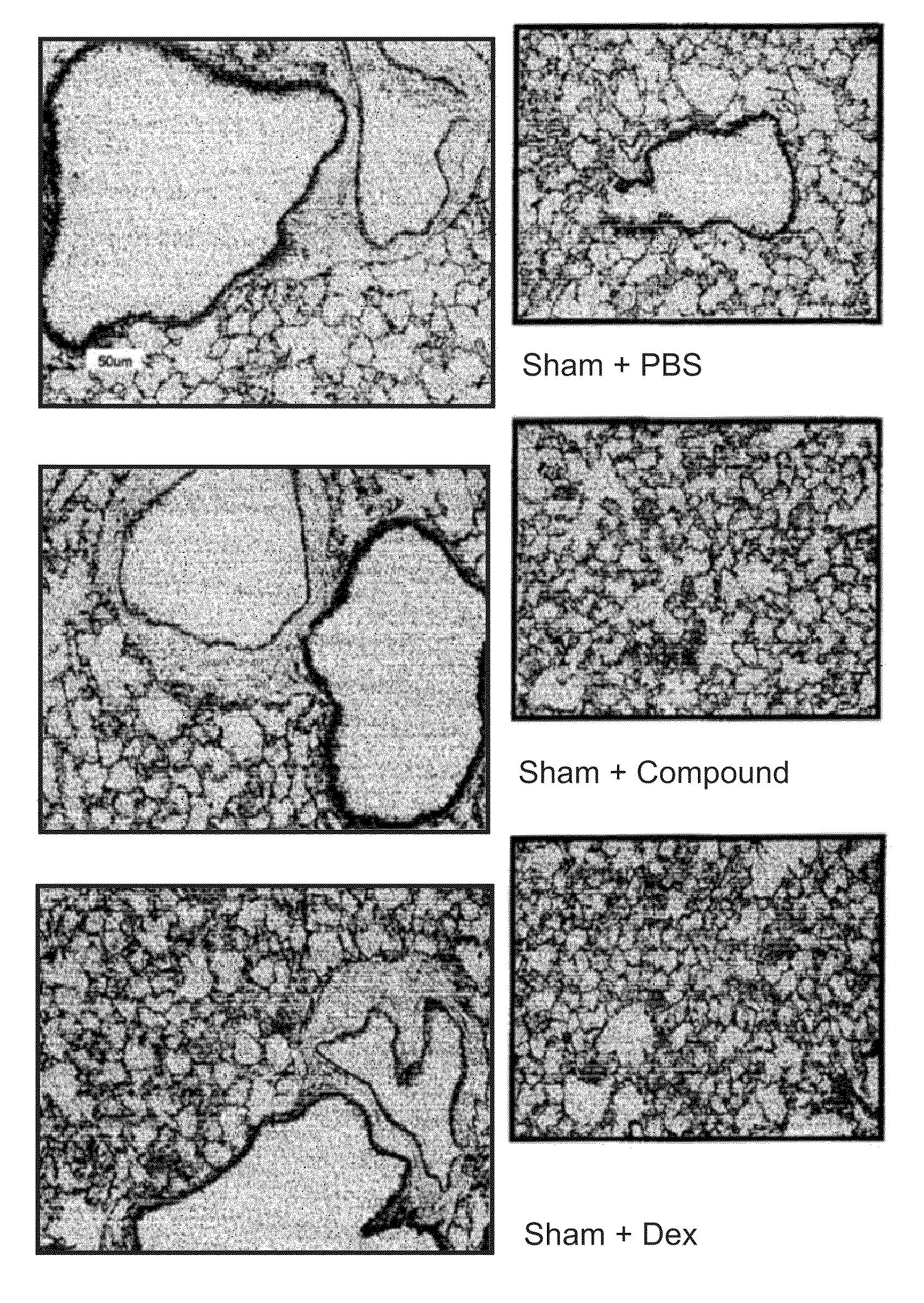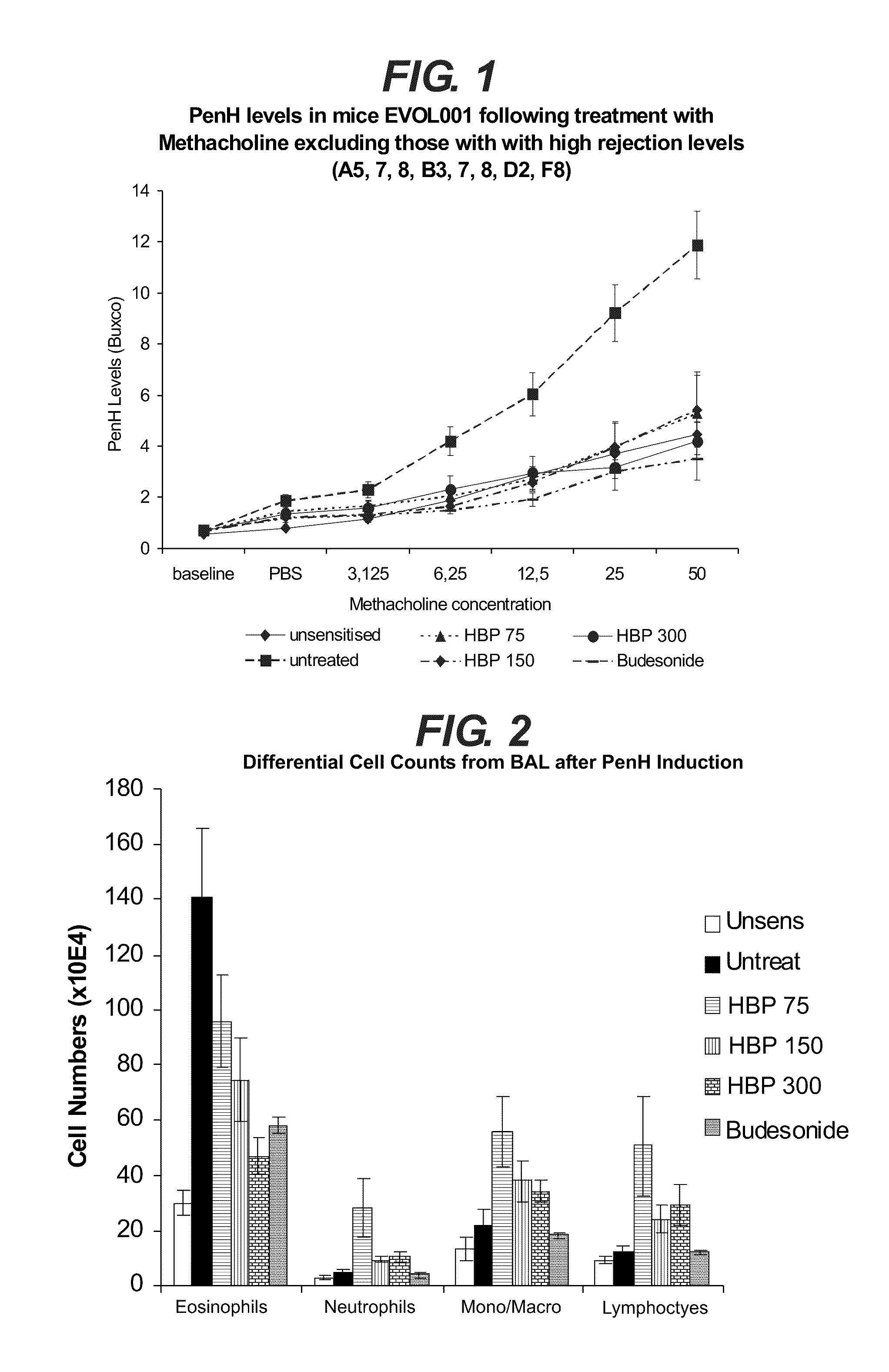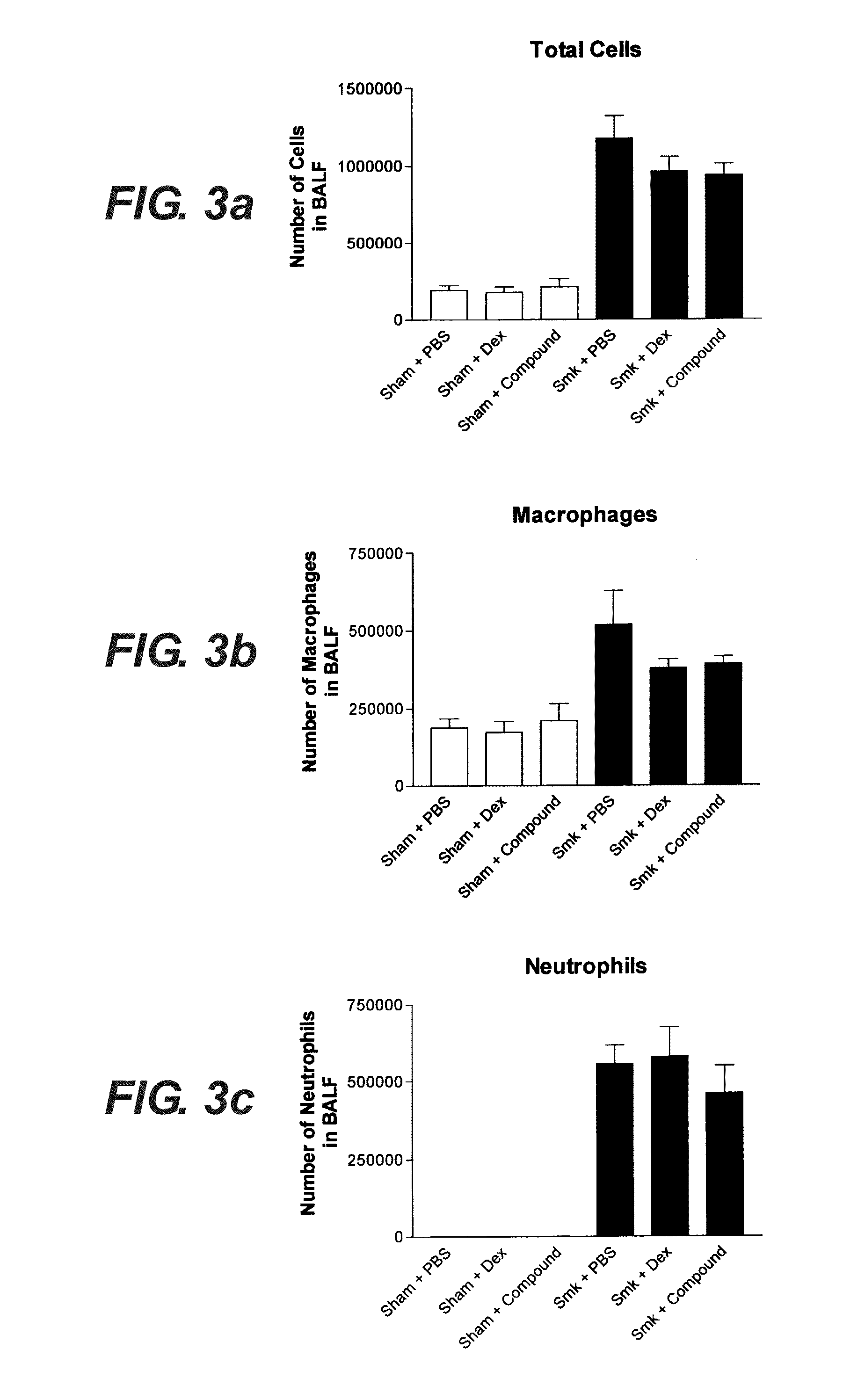Histamine binding protein
a technology of histamine and binding protein, which is applied in the field of histamine binding protein, can solve the problems of numerous undesirable effects, interfere with the expression of cytokine receptors, side effects, etc., and achieve the effects of reducing mmp9 and timp-1 protein levels, increasing mpo levels, and reducing tn
- Summary
- Abstract
- Description
- Claims
- Application Information
AI Technical Summary
Benefits of technology
Problems solved by technology
Method used
Image
Examples
example 1
HBP Activity Tested in an Acute Model of Asthma Modulation
[0078]The aim of the following test is to ascertain the response to HBP at three different concentrations in OVA-sensitised and challenged mice, compared with Budesonide treated and unsensitised / unchallenged controls.
[0079]Methodology
[0080]Protocol:
[0081]The work tested the response to the HBP of the invention in OVA sensitised and challenged mice. The HBP substance lot number 430-1105-003 at 9.84 mg / ml was used, produced by Evolutec. The sequence of the HBP protein is provided in SEQ ID NO:1. The coding sequence is provided in SEQ ID NO:2.
[0082]HBP protein is expressed from a pET24a-based plasmid in E. coli strain BLR(DE3). For production of the HBP protein, 10 shake flasks containing 1.0 L media each are inoculated. Shake flasks are then incubated at 37° C. and 200 rpm. During growth, the culture OD600 is monitored in a single flask, termed Shake flask #1. When the OD600 of Shake flask #1 reaches 2.0±0.5, the contents of th...
example 2
Comparative Effect of the HBP Protein and a Steroid (Dexamethasone) on a Range of Parameters in a Mouse Model of Cigarette Induced COPD-Like Inflammation.
[0132]2.1. Study Design
[0133]2.1.1 Objectives: To assess the effect of the HBP protein and a steroid (dexamethasone) on a range of parameters in a mouse model of cigarette induced COPD-like inflammation.
[0134]2.1.2 Group Size: n=8
[0135]2.1.3 Protocol: Male Balb / c mice 6-8 weeks old were exposed to cigarette smoke (9 Winfield cigarettes per day with <16 mg tar, <1.2 mg / kg nicotine and <15 mg CO) for 4 days, 15 min exposure per cigarette and then dissected on day 5.
[0136]2.1.4 Groups: Sham+HBP test drug[0137]Sham+placebo (PBS)[0138]Sham+steroid comparator[0139]Smoke+HBP test drug[0140]Smoke+placebo[0141]Smoke+steroid comparator
[0142]2.1.5 Drug Formulation:
[0143]Test Compound HBP:
[0144]Dosage: 10 mg / mL, i.p. (administered one hour prior to first smoke exposure each day).
[0145]Solvent: Phosphate Buffered Saline
[0146]Steroid Comparator,...
example 3
Stability of HBP
[0221]Samples of HBP lot no. P01105B 0.63 mg / ml and lot no. P01105E 5.0 mg / ml were tested after storage at 4° C. and 25° C. / 60% RH for 52 weeks.
[0222]The following assays were performed: purity / identity by SDS-PAGE, potency by the HUVEC bioassay and aggregation by sedimentation velocity.
[0223]Assessment of Purity and Identity by SDS-PAGE:
[0224]Precast gels 4-20% were prepared for gel electrophoresis. The test items were run under reducing and non-reducing conditions at indicated final concentrations of 0.30 mg / ml and 0.15 mg / ml. The reference standard was run at 0.60, 0.30 and 0.15 mg / ml. The samples were heated for 5 min at 70° C. and then put on ice. 10 μl standard and 10 μl sample per lane were loaded per lane and the gel was run at 100V for 120 min until the dye front was about 1.5 cm from the bottom of the gel. Then, the gel was stained with Coomassie Blue and an image was taken with a CCD camera.
[0225]The gels were analysed by the GelScan 5 Pro BioSciTec (2001)...
PUM
| Property | Measurement | Unit |
|---|---|---|
| Time | aaaaa | aaaaa |
| Dissociation constant | aaaaa | aaaaa |
| Mass | aaaaa | aaaaa |
Abstract
Description
Claims
Application Information
 Login to View More
Login to View More - R&D
- Intellectual Property
- Life Sciences
- Materials
- Tech Scout
- Unparalleled Data Quality
- Higher Quality Content
- 60% Fewer Hallucinations
Browse by: Latest US Patents, China's latest patents, Technical Efficacy Thesaurus, Application Domain, Technology Topic, Popular Technical Reports.
© 2025 PatSnap. All rights reserved.Legal|Privacy policy|Modern Slavery Act Transparency Statement|Sitemap|About US| Contact US: help@patsnap.com



